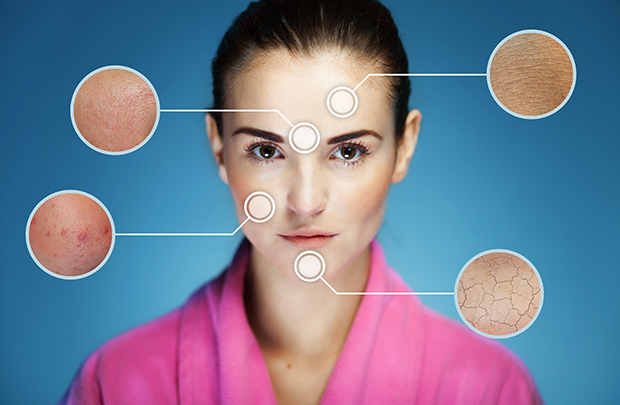
Submitted by Doug Leone, MD, and Adrienne Schupbach, MD, Dermatology and Mohs Surgery Institute
Did you know that your skin is the largest organ of your body? It is, in terms of both weight —between six and nine pounds — and surface area — about two square yards. Your skin separates the inside of your body from the outside world. It protects you from bacteria and viruses, and regulates your body temperature.
Conditions that irritate, clog, or inflame your skin can cause symptoms such as redness, swelling, burning, and itching. Allergies, irritants, your genetic makeup, and certain diseases and immune system problems can cause dermatitis, hives, and other skin conditions. Many skin problems, such as acne, also affect your appearance. Your skin can also develop several kinds of cancers.
Here are the key facts about some of the most common skin problems:
Acne — A disease that affects the skin’s oil glands. Acne is the most common skin disease; an estimated 80 percent of all people have acne at some point. If over-the-counter treatments are not effective, see a dermatologist, as early treatment is the best way to prevent scars.
Eczema — A long-term skin disease. The most common symptoms are dry and itchy skin, rashes on the face, inside the elbows, behind the knees, and on the hands and feet. Currently, there is no single test to diagnose eczema, so doctors rely on information about you and your family.
Hives — Red and sometimes itchy bumps on your skin usually caused by an allergic reaction to a drug or food. Other causes include infections and stress. Hives are very common. They usually go away on their own, but if you have a serious case, seek medical help.
Impetigo — A skin infection caused by bacteria. Usually the cause is staphylococcal (staph), but sometimes streptococcus (strep) can cause it, too. It is most common in children between the ages of two and six. It usually starts when bacteria get into a break in the skin, such as a cut, scratch, or insect bite. Symptoms start with red or pimple-like sores, usually on the face, arms, and legs, surrounded by red skin. The sores fill with pus, then break open after a few days and form a thick crust. Impetigo can be treated with antibiotics.
Melanoma — A severe and potentially life-threatening skin cancer. The first symptom is usually a change in the symmetry, border, color, or diameter of a mole.
Moles — Growths on the skin. They happen when cells in the skin, called melanocytes, grow in a cluster with tissue surrounding them. Most people have between 10 and 40 moles. A person may develop new moles from time to time, usually until about age 40. A mole that looks different from an ordinary mole is more likely to develop into melanoma. Everyone should have a dermatologist check moles on a regular basis.
Psoriasis — A skin disease that causes scaling and swelling. Most psoriasis causes patches of thick, red skin with silvery scales. These patches can itch or feel sore. They are often found on the elbows, knees, other parts of the legs, scalp, lower back, face, palms, and soles of the feet. But they can show up on other areas, as well. Psoriasis can be hard to diagnose because it can look like other skin diseases.
Rashes (basic dermatitis) — Dry and itchy skin; rashes on the face, inside the elbows, behind the knees, and on the hands and feet. Your dermatologist can advise you on the proper skin care routine.
Rosacea — Frequent redness (flushing) of the face, small red lines under the skin, inflamed eyes/eyelids, a swollen nose, and thicker skin. Your physician can usually diagnose rosacea with a thorough medical history and physical exam. There is no cure for rosacea, but it can be treated and controlled.
Skin cancer — Skin cancer is the most common form of cancer in the United States. The two most common types are basal cell cancer and squamous cell cancer. They usually form on the head, face, neck, hands, and arms. Melanoma is more dangerous but less common.
For more information or to schedule an appointment, you may contact the Dermatology and Mohs Surgery Institute at 309-451-DERM (3376), www.dermatologistbloomington.com. Dr. Leone and Dr. Schupbach, both residents of Bloomington, are board-certified dermatologists, specializing in medical and cosmetic dermatology, including the treatment of skin cancer, moles, acne, rashes, warts, and all skin disorders. Dr. Leone is one of the few Mohs-trained surgeons in the area. Their practice, is located at 3024 E. Empire St. 2nd floor (in the Advocate BroMenn outpatient center).
